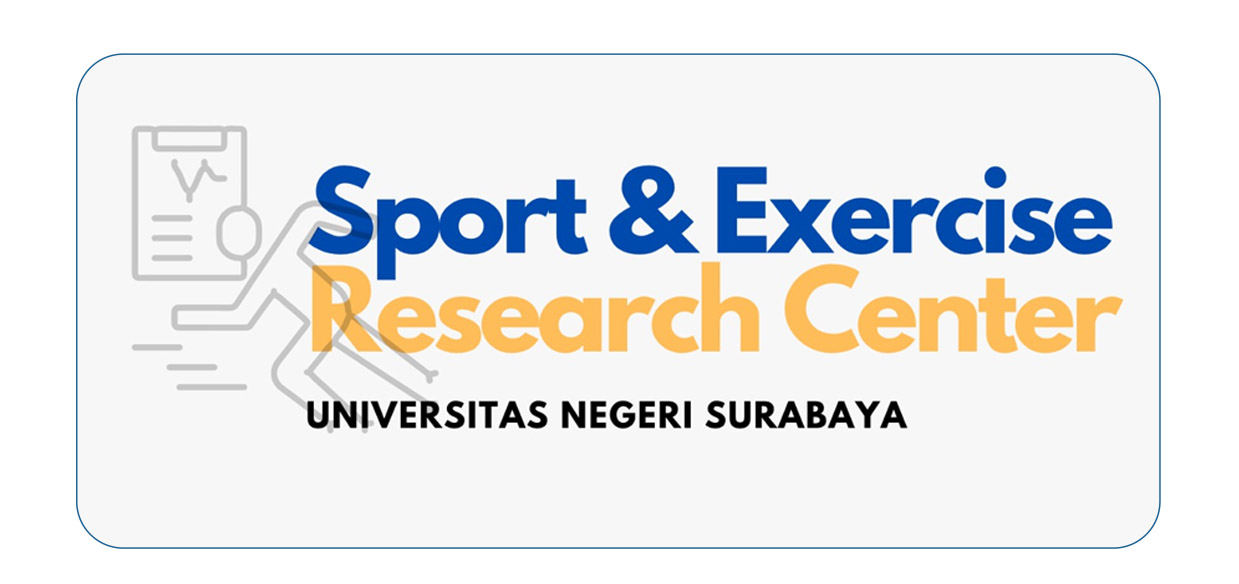Exploring The Impact of Physical Activity and Sleep Quality on Physical Fitness and Cognitive Intelligence
DOI:
https://doi.org/10.26740/jossae.v10n1.p1-11Keywords:
Cognitive Intelligence, Physical Activity Level, Physical Fitness, Sleep QualityAbstract
Lifestyle changes and sedentary habits have led to increased health issues, including obesity, cardiovascular diseases, and cognitive decline. This study examines the impact of physical activity and sleep quality on physical fitness and cognitive intelligence among university students. A quantitative correlational design was applied to 60 students aged 19–21 years. Physical activity was assessed using the International Physical Activity Questionnaire (IPAQ), sleep quality with the Pittsburgh Sleep Quality Index (PSQI), physical fitness through the Multistage Fitness Test (MFT), and cognitive intelligence via the Digit Span Test. Results showed that 58.33% of students engaged in moderate physical activity, and 80% had good sleep quality. Correlation analysis revealed significant relationships between physical activity and physical fitness (r = 0.571, p = 0.002), sleep quality and physical fitness (r = 0.735, p = 0.000), physical activity and cognitive intelligence (r = 0.520, p = 0.004), and sleep quality and cognitive intelligence (r = 0.674, p = 0.001). Regression analysis indicated that sleep quality contributed 33.2% to physical fitness and 28.7% to cognitive intelligence, while physical activity contributed 32.7% and 25.4%, respectively. These findings highlight the need to promote physical activity and sleep hygiene to enhance students’ health.
References
Agostino, S. (2023). Physical strength levels and short-term memory efficiency in primary school children: A possible match? Journal of Sports Medicine and Physical Fitness, 63, 1343–1349. https://doi.org/10.23736/S0022-4707.23.14996-6
Ai, J. Y. (2022). Effects of Multi-Component Exercise on Sleep Quality in Middle-Aged Adults. International Journal of Environmental Research and Public Health, 19(23). https://doi.org/10.3390/ijerph192315472
Alfini, A. J. (2022). Cardiorespiratory Fitness as a Moderator of Sleep-Related Associations with Hippocampal Volume and Cognition. Brain Sciences, 12(10). https://doi.org/10.3390/brainsci12101360
Altunalan, T. (2024). The relationship between physical activity level and timing and sleep quality and hygiene in healthy individuals: A cross-sectional study. BMC Public Health, 24(1). https://doi.org/10.1186/s12889-024-20708-1
Bermudo-Gallaguet, A., Velázquez-Díaz, D., Sanz, B., Cadenas-Sanchez, C., Cabeza-Ruiz, R., Andres, A., Gajewski, P. D., Plini, E. R. G., & Hola, V. (2023). The Effect of Two Somatic-Based Practices Dance and Martial Arts on Irisin, BDNF Levels and Cognitive and Physical Fitness in Older Adults: A Randomized Control Trial. Clinical Interventions in Aging, 14(3), 652–661. https://doi.org/10.1111/jir.12883
Casagrande, M., Favieri, F., Tambelli, R., & Forte, G. (2020). The enemy who sealed the world: Effects quarantine due to the COVID-19 on sleep quality, anxiety, and psychological distress in the Italian population. Sleep Medicine. https://doi.org/10.1016/j.sleep.2020.05.011
Chow, C. H. (2023). The relationship between sleep and physical activity in an in-patient rehabilitation stroke setting: A cross-sectional study. Topics in Stroke Rehabilitation, 30(1), 43–52. https://doi.org/10.1080/10749357.2021.2006982
Corral-Pérez, J. (2024). Associations Between Physical Activity and Inactivity Levels on Physical Function and Sleep Parameters of Older Adults With Frailty Phenotype. Journal of Applied Gerontology, 43(7), 910–921. https://doi.org/10.1177/07334648231218095
Feng, Y. (2023). Relationship between serum brain-derived neurotrophic factor and cognitive impairment in children with sleep-disordered breathing. Frontiers in Pediatrics, 10. https://doi.org/10.3389/fped.2022.1027894
Giustino, V., Parroco, A. M., Gennaro, A., Musumeci, G., Palma, A., & Battaglia, G. (2020). Physical Activity Levels and Related Energy Expenditure during COVID-19 Quarantine among the Sicilian Active Population: A Cross-Sectional Online Survey Study. Sustainability, 12(4356).
Goevaerts, W. F. (2023). Adherence to a lifestyle monitoring system in patients with heart disease: Protocol for the care-on prospective observational trial. BMC Cardiovascular Disorders, 23(1). https://doi.org/10.1186/s12872-023-03222-x
Gutiérrez-Espinoza, H. (2024). Lifestyle behavior of physiotherapy students from Ecuador upon admission to higher education: A cross-sectional study. Frontiers in Sports and Active Living, 6. https://doi.org/10.3389/fspor.2024.1352144
Hadiana, O., Syamaun, M., & Ratnawati, R. (2023). Implementation of the Inquiry Model on the Critical Thinking Ability of Prospective Physical Education Teachers in Football Learning. Physical Activity Journal, 5(1), 47. https://doi.org/10.20884/1.paju.2023.5.1.9764
Haryanto, J. (2024). Exploring cognitive processing speed, emotional intelligence, and topspin shot accuracy in table tennis. Journal of Physical Education and Sport, 24(3), 695–702. https://doi.org/10.7752/jpes.2024.03082
Hbaieb, M. A. (2025). Endothelial Dysfunction in Acute Myocardial Infarction: A Complex Association With Sleep Health, Traditional Cardiovascular Risk Factors and Prognostic Markers. Clinical Cardiology, 48(1). https://doi.org/10.1002/clc.70080
Huang, Y., & Zhao, N. (2020). Generalized anxiety disorder, depressive symptoms and sleep quality during COVID-19 outbreak in China: A web-based cross-sectional survey. Psychiatry Research. https://doi.org/10.1016/j.psychres.2020.112954
Leger, L. A., Mercier, D., Gadoury, C., & ... (1988). The multistage 20 metre shuttle run test for aerobic fitness. Journal of Sports …. https://doi.org/10.1080/02640418808729800
Lemes, V. B. (2024). Associations of sleep time, quality of life, and obesity indicators on physical literacy components: A structural equation model. BMC Pediatrics, 24(1). https://doi.org/10.1186/s12887-024-04609-1
MacEachern, S., Forkert, N. D., Lemay, J. F., & Dewey, D. (2022). Physical Activity Participation and Barriers for Children and Adolescents with Disabilities. International Journal of Disability, Development and Education, 69(1), 204–216. https://doi.org/10.1080/1034912X.2021.1952939
Marijančić, V. (2023). Relationship between Physical Activity and Sedentary Behavior, Spinal Curvatures, Endurance and Balance of the Trunk Muscles-Extended Physical Health Analysis in Young Adults. International Journal of Environmental Research and Public Health, 20(20). https://doi.org/10.3390/ijerph20206938
Marlicz, W. (2023). Burnout in healthcare—The Emperor’s New Clothes. In Przeglad Gastroenterologiczny (Vol. 18, Issue 3, pp. 274–280). https://doi.org/10.5114/PG.2023.131595
Mulé, D., Jeger, I., Dötsch, J., Breido, F., Ferrari, N., & Joisten, C. (2022). Correlation between Language Development and Motor Skills, Physical Activity, and Leisure Time Behaviour in Preschool-Aged Children. Children, 9(3). https://doi.org/10.3390/children9030431
Nader, P. A. (2023). Results from the Lebanese 2022 report card on physical activity for children and youth. Journal of Exercise Science and Fitness, 21(1), 14–19. https://doi.org/10.1016/j.jesf.2022.10.007
Pancotto, H. P. (2021). Influence of swimming on sleep and quality of life of people with visual impairments. Revista Brasileira de Medicina Do Esporte, 27(2), 179–183. https://doi.org/10.1590/1517-869220212702191748
Patel, A. (2024). The effect of exercise on daytime sleepiness in healthy individuals. In Sleep Medicine (Vol. 120, pp. 10–14). https://doi.org/10.1016/j.sleep.2024.05.049
Rojas, G. (2024). Physical activity level and physical fitness in subjects with chronic musculoskeletal pain: A cross-sectional study. PeerJ, 12. https://doi.org/10.7717/peerj.16880
Sepriadi, Syafruddin, Khairuddin, Alnedral, Bafirman, Rifki, M. S., Ihsan, N., Eldawaty, Hayati, S. R., Pratiwi, H., Pratiwi, M. D., & Chaeroni, A. (2024). Effect of nutritional status and parents’ income on physical fitness of elementary school students. Retos, 58, 506–510. https://doi.org/10.47197/retos.v58.107998
Shimamoto, H. (2021). Relationships between depression, daily physical activity, physical fitness, and daytime sleepiness among japanese university students. International Journal of Environmental Research and Public Health, 18(15). https://doi.org/10.3390/ijerph18158036
Sholikhah, A. M., & Tuah, N. A. A. H. M. (2021). Predictors of Overweight and Obesity Among Children and Adolescents in Developing Countries: A Literature Review. 338–350. https://doi.org/10.2991/assehr.k.211223.059
Smith, P. J. (2023). Sleep Quality, Metabolic Function, Physical Activity, and Neurocognition Among Individuals with Resistant Hypertension. Journal of Alzheimer’s Disease : JAD, 93(3), 995–1006. https://doi.org/10.3233/JAD-230029
Smyth, C. (2000). The Pittsburgh Sleep Quality Index (PSQI). Director (Cincinnati, Ohio). https://doi.org/10.1067/min.2000.107649
Tikhomirov, R. (2024). The Effect of Physical Activity of Varying Intensity on Students’ Cognitive Abilities. Education and Self Development, 19(3), 165–180. https://doi.org/10.26907/esd.19.3.12
Vargas, C. A. (2021). Syndrome metabolic markers, fitness and body fat is associated with sleep quality in women with severe/morbid obesity. International Journal of Environmental Research and Public Health, 18(17). https://doi.org/10.3390/ijerph18179294
Verdelho, A. (2022). Physical Activity Self-Report Is Not Reliable among Subjects with Mild Vascular Cognitive Impairment: The AFIVASC Study. Journal of Alzheimer’s Disease, 87(1), 405–414. https://doi.org/10.3233/JAD-215381
Verschuren, O. (2023). Real-time daily fatigue, sleep, physical activity, and health-related fitness in adults with cerebral palsy. Developmental Medicine and Child Neurology, 65(4), 509–516. https://doi.org/10.1111/dmcn.15421
Walker, K. (2024). Patients’ and staff’s experiences of Well-Track physical activity and sleep quality intervention in an Early Intervention in Psychosis (EIP) service. Advances in Mental Health, 22(3), 635–652. https://doi.org/10.1080/18387357.2024.2302118
Wang, T. (2024). A Cross-Sectional Study on the Association between Physical Activity and Cognitive Function Among Community-Dwelling Older Adults in Tianjin. Current Alzheimer Research, 21(7), 517–525. https://doi.org/10.2174/0115672050347596241111112811
Webber, T. A., & Soble, J. R. (2018). Utility of various WAIS-IV Digit Span indices for identifying noncredible performance validity among cognitively impaired and unimpaired examinees. Clinical Neuropsychologist, 32(4), 657–670. https://doi.org/10.1080/13854046.2017.1415374
Widanita, N., & Anggraeni, D. (2023). The Effect of Aerobic Exercise on Improving SleepQuality and Flexibility in Overweight Women in the Covid-19 Pandemic Era. Physical Activity Journal (PAJU).
Wilhite, K., Booker, B., Huang, B. H., Antczak, D., Corbett, L., Parker, P., Noetel, M., Rissel, C., Lonsdale, C., Del Pozo Cruz, B., & Sanders, T. (2023). Combinations of Physical Activity, Sedentary Behavior, and Sleep Duration and Their Associations With Physical, Psychological, and Educational Outcomes in Children and Adolescents: A Systematic Review. American Journal of Epidemiology, 192(4), 665–679. https://doi.org/10.1093/aje/kwac212
Wing, D. (2024). Cardiorespiratory Fitness and Sleep, but not Physical Activity, are Associated with Functional Connectivity in Older Adults. Sports Medicine - Open, 10(1). https://doi.org/10.1186/s40798-024-00778-6
Yan, K. (2024). Association of daily physical activity with hypertension, depressive symptoms, loneliness, and poor sleep quality in aged 60–79 older adults. Scientific Reports, 14(1). https://doi.org/10.1038/s41598-024-81798-w
Yuliastrid, D., Sholikhah, A. M., Mustar, Y. S., Noordia, A., Perwira, A., & Putera, S. H. P. (2024). A Cross-Sectional Study Exploring Sport Participation, Perceived Stress, and Its Association With Life Satisfaction Among University Students. Sports Science and Health, 14(1), 5–12.
Downloads
Published
How to Cite
Issue
Section
License
Copyright (c) 2025 JOSSAE (Journal of Sport Science and Education)

This work is licensed under a Creative Commons Attribution-ShareAlike 4.0 International License.
 Abstract views: 396
,
Abstract views: 396
, PDF Downloads: 261
,
PDF Downloads: 261
, PDF Downloads: 88
PDF Downloads: 88








